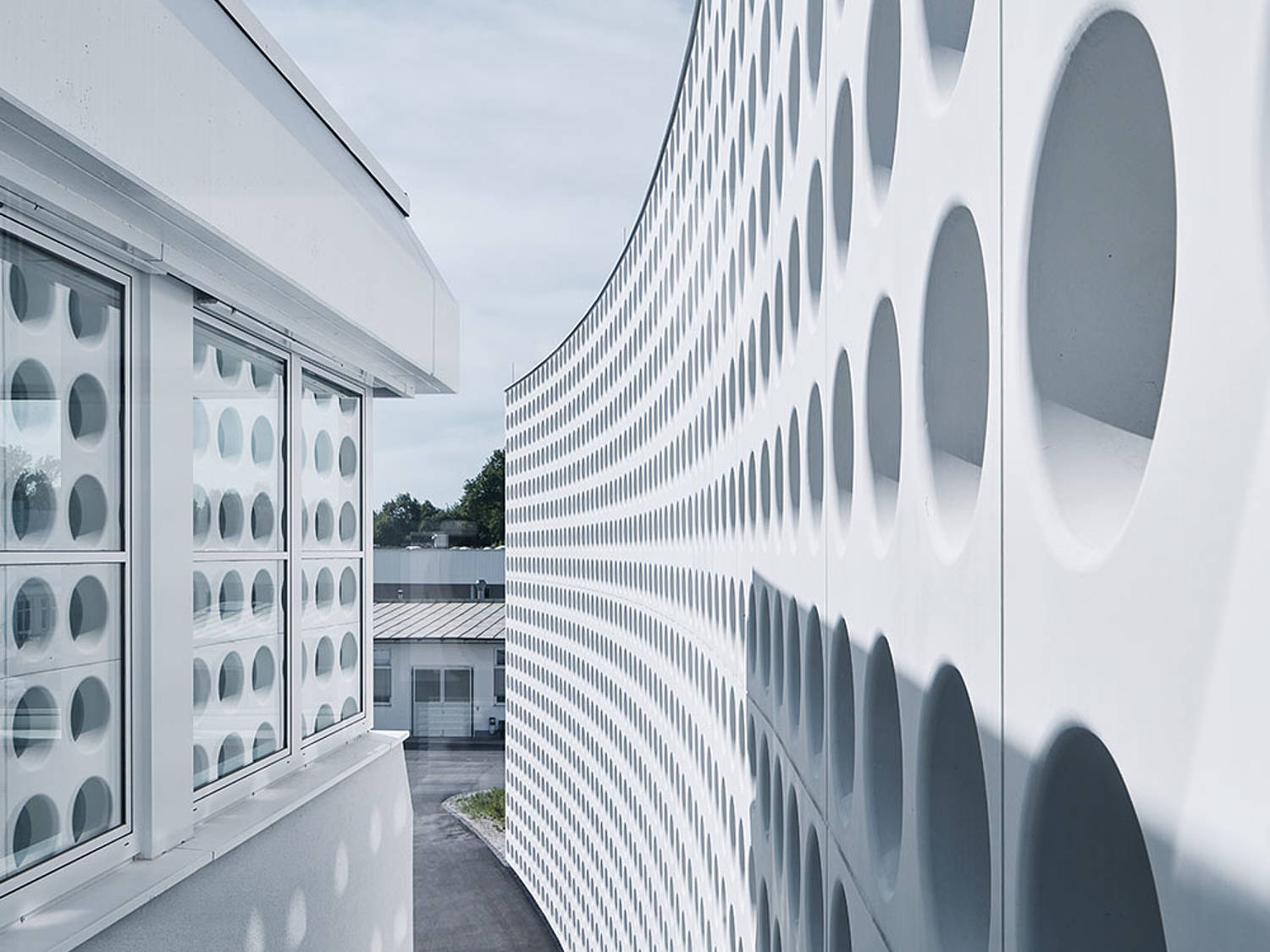Silhouette Lens Lab, Linz, Austria
Circular openings in concrete dominate the production hall of Austrian glasses producer Silhouette. For the façade design, the architects sought inspiration in the company’s product.
The new production facility and warehouse for Austrian glasses company Silhouette makes it clear from the outside what matters inside: with its subtle arch, the building’s form is reminiscent of a lens, and the circular openings in the façade take their inspiration from glasses.
With this building, Austrian firm X Architekten have given this traditional family-run company a modern visual statement on their very own business grounds. Silhouette has been making glasses at their Linz site since 1964. The company defines itself by its craftsmanship and innovative, contemporary designs. X Architekten’s design reflects the company’s identity: ‘the design attempts to combine lightness and strength - two significant keywords of the company’s ideology - in one construction while creating a contemporary, timeless look,’ say the architects.
The planners positioned the building in the center of the company grounds and directly near existing buildings with offices and workshops in order to guarantee short paths. The basis for the design is a rectangular box that the architects altered using convex lines - an homage to the shape of the lens. This arch leads to the new building’s entrance.
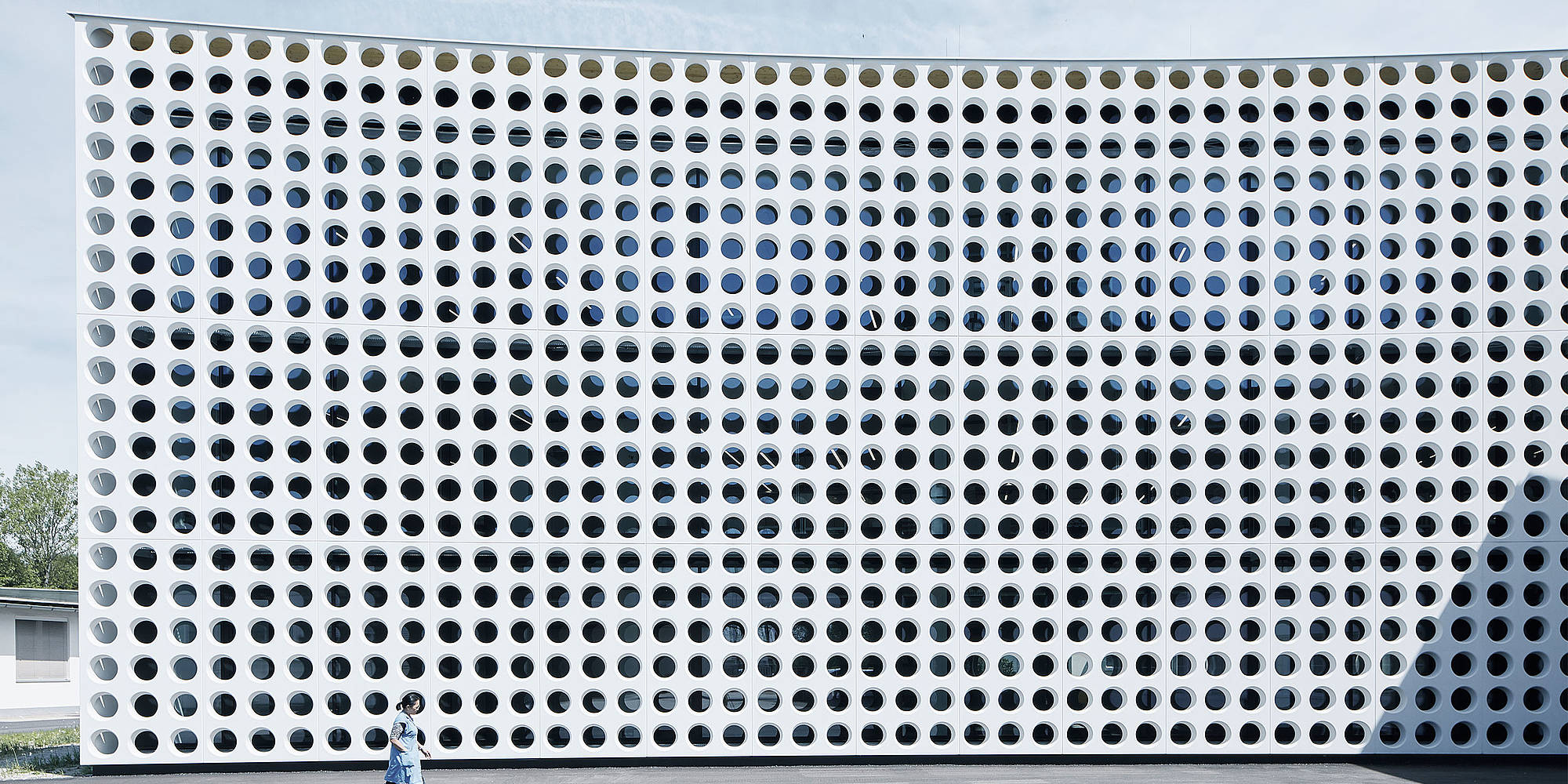
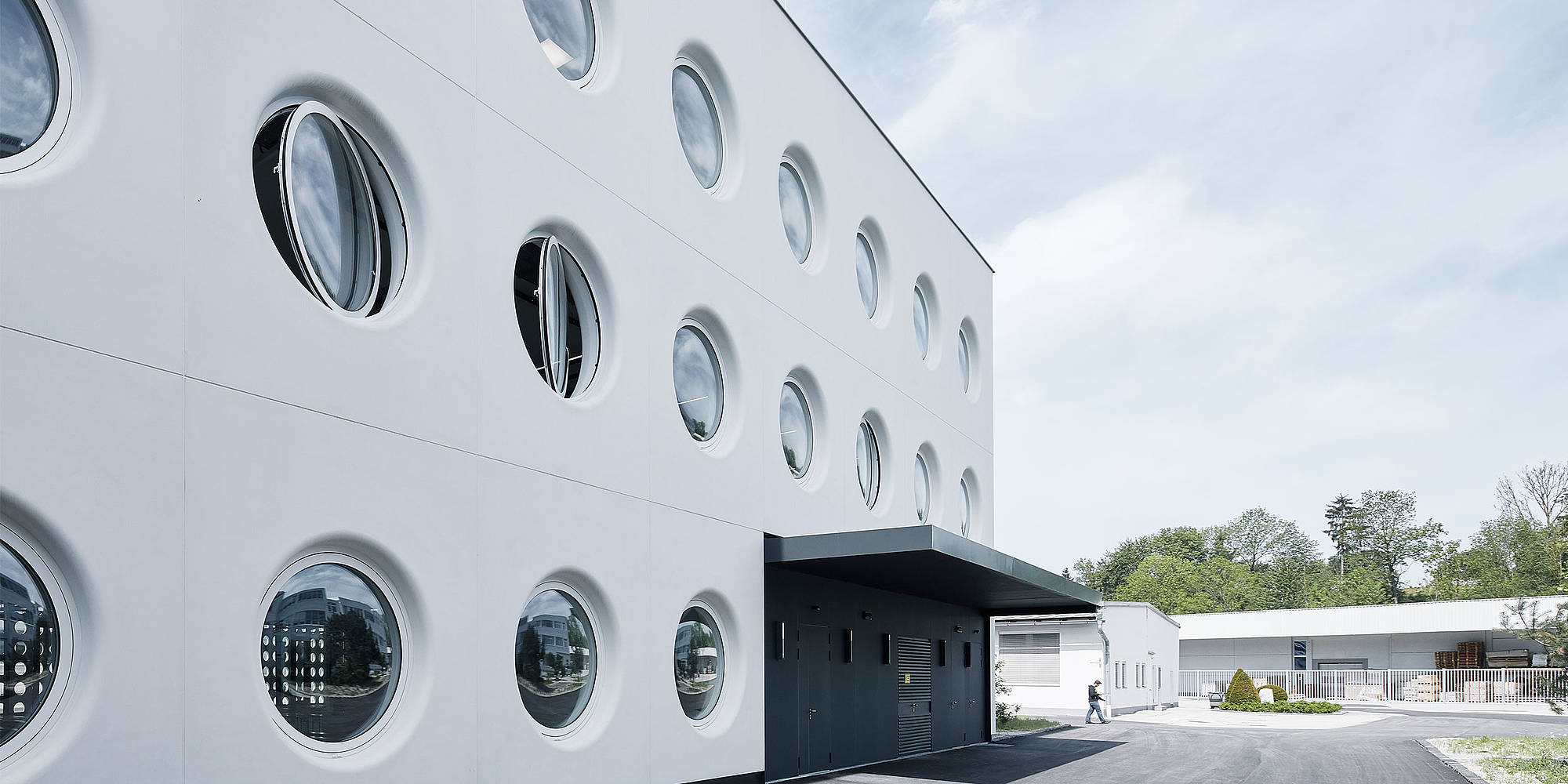
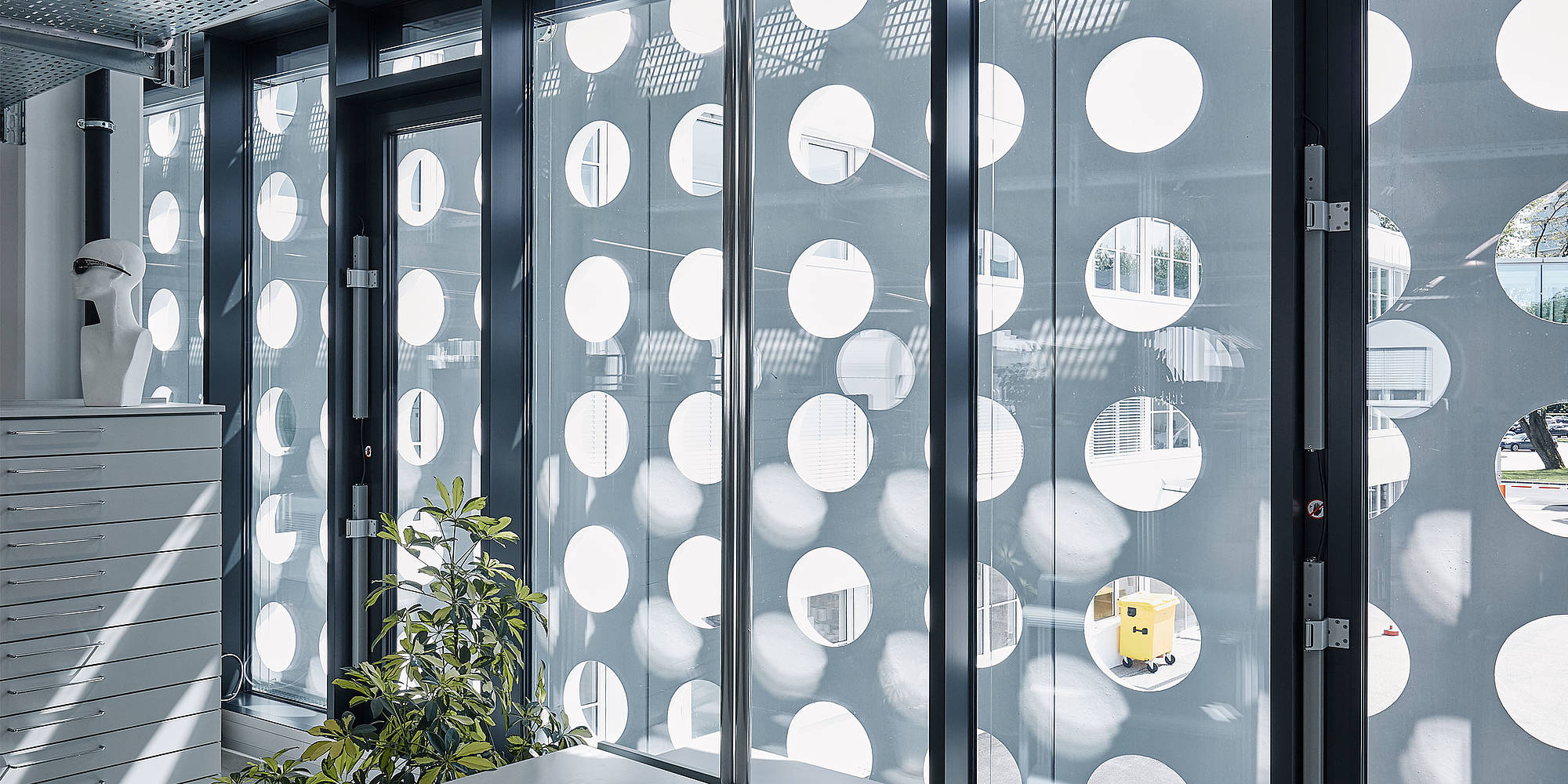
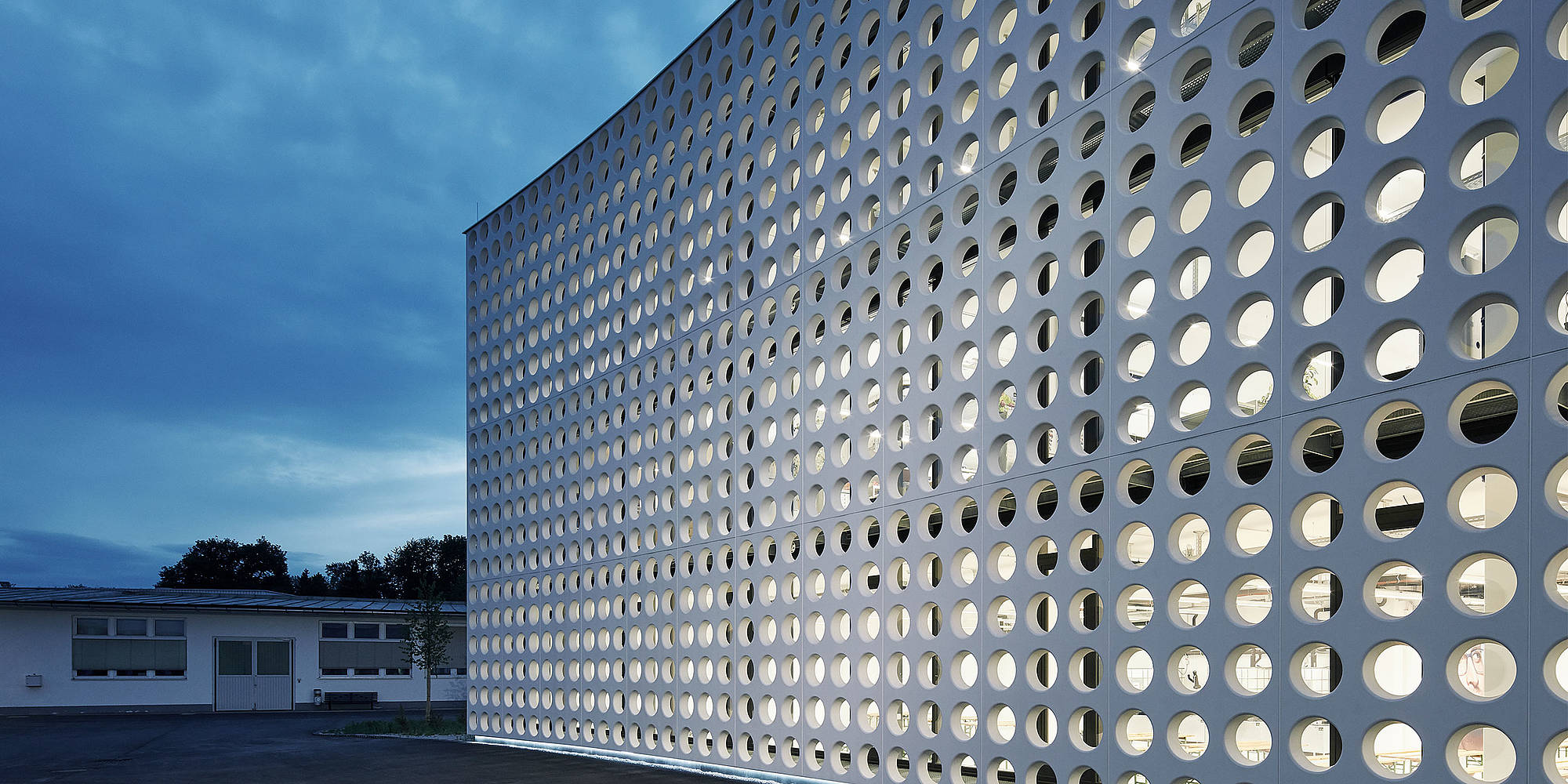
White concrete makes the building look elegant and light. The exterior shell work was carried out by Austrian company Systembau Eder. The concave southern side is defined by a screen of perforations. To this end, 12cm thick prefab concrete pieces featuring the perforated design were secured to the front of the glass façade. ‘Like a brise soleil, the texture creates exciting interplays between the interior and exterior,’ say the architects. ‘As a counter, the north side has been given large circular openings with convex glazing.’ To achieve this, 81 large panels were mounted and then the circular windows installed.
In order to create the panels with the circular gaps, Systembau Eder opted for custom Plafond formliners from RECKLI. Plafond formliners are textured formliners with an especially smooth surface ideal for creating class 4 exposed concrete. RECKLI completed the model and the ordered shell liners within three weeks.
In-house carpenters completed round tubs with a rounded profile for the positive model, which was used to pour the formliner. ‘The biggest effort was in getting the rounded hole into the Plafond formliner and adjusting it at the recess,’ said RECKLI Head of Sales Sven Kosjak. A template was placed on the model to create the hole.
RECKLI also produced a wooden recess placeholder in the same thickness as the element applied to the shell along with the formliner when the elements were poured. A polyurethane profile was poured onto the recess placeholders in order to avoid any visible transitions between the profile and the Plafond formliner. ‘We had to manually compare ad adjust the heights of the Plafond so that the transition from formliner to profile was completely seamless,’ said Kosjak. Systembau Eder secured both parts at the plant in order to produce the finished pieces.
The finished façade met the expectations of client and architects alike in its ability to create a monument to a modern and technologically accomplished company.
